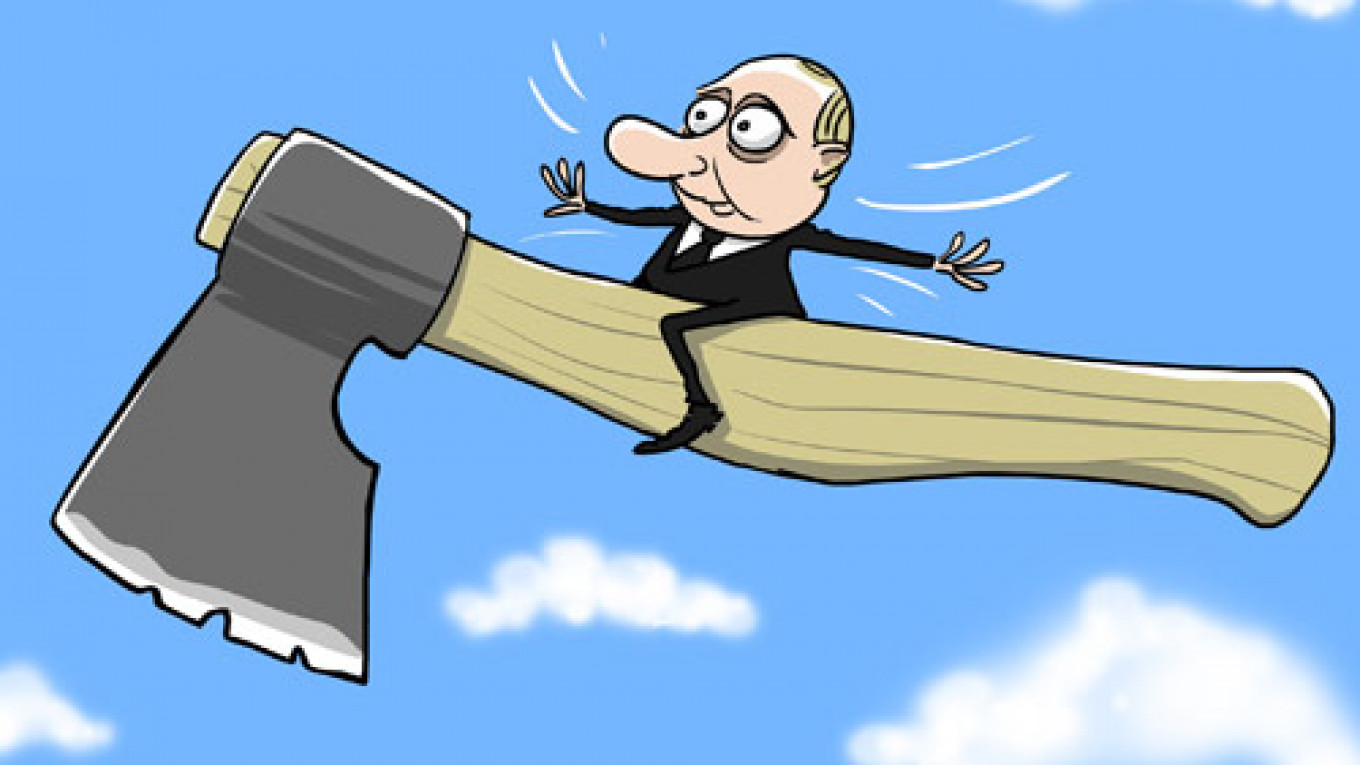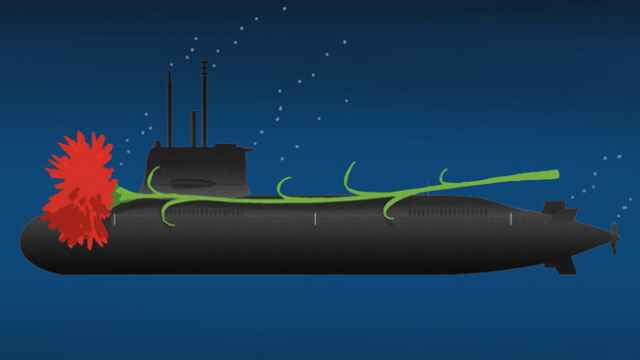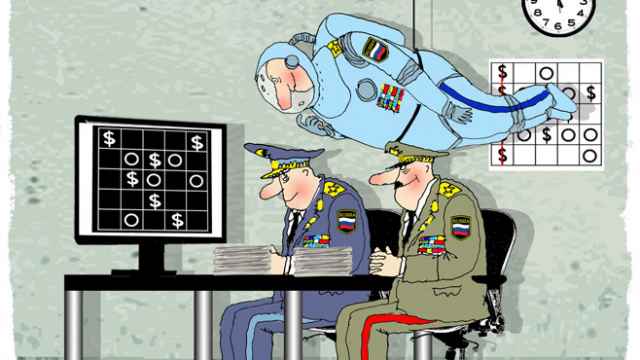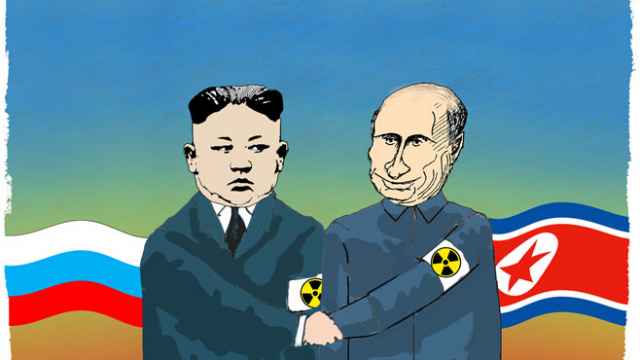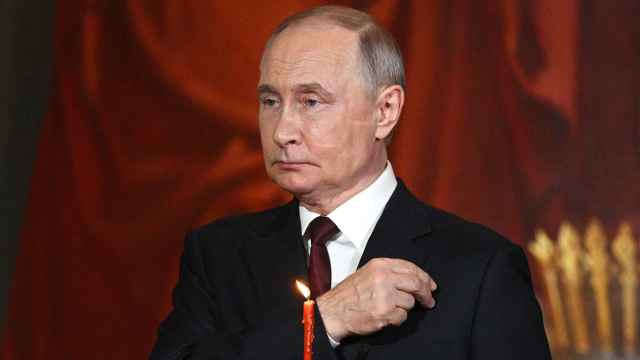When the recent MAKS 2015 air show produced absolutely no achievements worthy of mention, the journalists whose sad fate it was to cover the event were essentially reduced to mumbling extras in a huge crowd scene. The main sensation of the show was a control line model of a flying ax with propellers that young aircraft designers flew for President Vladimir Putin during his visit to the air show.
All official enthusiasm aside, the event was rather dull. Even the figures that Putin cited at the opening of MAKS 2015 were not very impressive. For example, he said that 600 Russian and 150 foreign companies were on hand this year. However, 1,100 companies participated in the previous biennial air show in 2013. And whereas foreign companies brought approximately 50 of their aircraft to that event, this year, the single foreign aircraft on display was an Airbus A-350.
Neither did this year's participants conclude a single noteworthy deal — and that includes the deal for the delivery of 100 Sukhoi Superjets to a Russian state leasing company, essentially shifting money from one government pocket to another.
Most surprisingly, the authorities made no mention of Defense Ministry plans to order the production and delivery of 48 Su-35 fighter jets from the United Aircraft Corporation (UAC). Evil tongues claim that the Defense Ministry is focusing its efforts on building its own Patriot Park and does not want to strengthen the popularity of the competing MAKS air show.
However, if such a contract had been concluded, it would have raised numerous questions. At a total cost of 100 billion rubles, it represents the revision to a contract originally signed back in 2006 that set the price for that number of aircraft at 66 billion rubles — almost 50 percent less.
Of course, inflation and the rising cost of parts and components affect the price of military equipment, but not to the point of almost doubling the price tag. What's more, the transition to mass production should significantly lower the cost per unit, not increase it.
However, production at the UAC shows the opposite trend. The cost of the Su-35 has risen sharply during production and delivery. And, although Putin proudly announced that the volume of aircraft production had risen by 20 percent, the actual measure of that increase is not in the number of units delivered, but in the price paid for each.
I must say that this year's exposition failed to impress. The T-50 fifth generation fighter jet was the only aircraft on display that was at least partially new, and even then, its engine and radar — the key components — are hardly fifth generation equipment. The only other "new" aircraft on hand were the Su-35 and the Il-476, both modifications of airplanes originally created 30-40 years ago. The MAKS 2015 exhibition greatly undermined confidence in the health of the Russian aviation industry.
That is why Russian suppliers did not sign any significant contracts with foreign partners at the air show. And something strange happened as well. The president of Egypt, the king of Jordan and the crown prince of Abu Dhabi all attended the event, but apparently spoke with Putin about everything but the purchase of Russian military equipment.
Rumors that Egypt will buy a batch of Russian K-52 helicopters have not borne out, and Iran has yet to confirm plans to renew its order for S-300 surface-to-air missile systems. The Iranian vice president, who was also in Moscow during this time, only hinted that his country is considering the purchase of two types of Russian military aircraft.
It is understandable that foreign buyers are in no hurry to sign contracts with Russia. The most successful deliveries of Russian arms in the past were made possible by first modernizing the equipment with Western electronics. For example, Russia teamed up with France and Israel to create the avionics for the Su-30 MKI. However, both of those former partners were absent from MAKS 2015. Western countries now refuse to cooperate with Russia on military matters.
It remains a question whether electronics from China — which almost tripled the scale of its participation in MAKS — can compensate for Russia's break with the West. It also remains to be seen how long the Kremlin can prop up the country's terribly inefficient defense industry. Potential buyers see that risk and are likely to postpone major purchases.
Thus, it seems that the flying ax was not only the highlight of the event, but also the very symbol of MAKS 2015 — as well as the symbol of the state of affairs in the Russian aviation industry.
Alexander Golts is deputy editor of the online newspaper Yezhednevny Zhurnal.
A Message from The Moscow Times:
Dear readers,
We are facing unprecedented challenges. Russia's Prosecutor General's Office has designated The Moscow Times as an "undesirable" organization, criminalizing our work and putting our staff at risk of prosecution. This follows our earlier unjust labeling as a "foreign agent."
These actions are direct attempts to silence independent journalism in Russia. The authorities claim our work "discredits the decisions of the Russian leadership." We see things differently: we strive to provide accurate, unbiased reporting on Russia.
We, the journalists of The Moscow Times, refuse to be silenced. But to continue our work, we need your help.
Your support, no matter how small, makes a world of difference. If you can, please support us monthly starting from just $2. It's quick to set up, and every contribution makes a significant impact.
By supporting The Moscow Times, you're defending open, independent journalism in the face of repression. Thank you for standing with us.
Remind me later.



